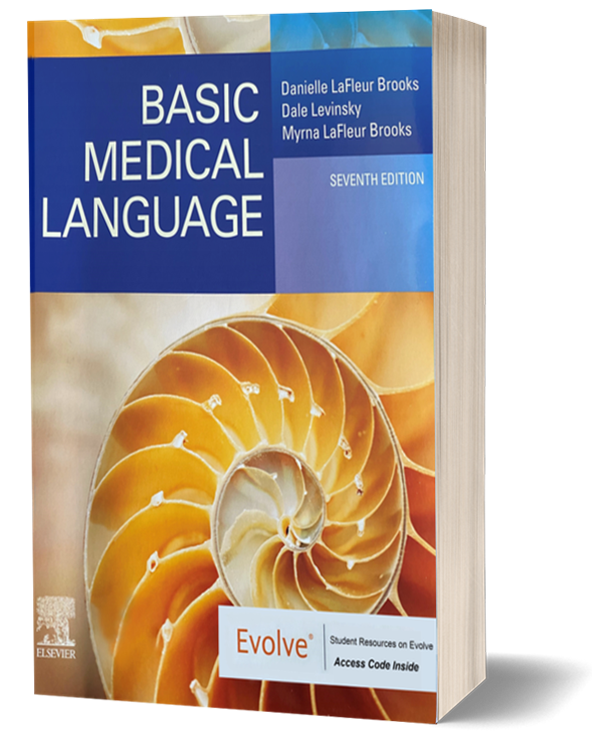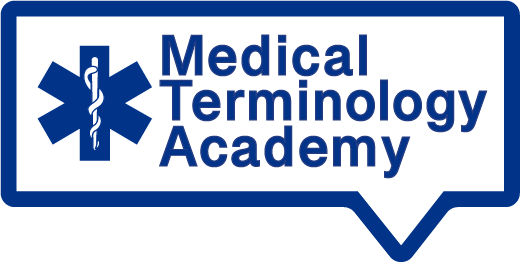About the Textbook: Basic Medical Language
by Danielle LaFleur Brooks, MEd, MA, Dale M Levinsky, MD, and Myrna LaFleur Brooks, RN, BEd
Basic Medical Language, 7th Edition provides the foundation to communicate using medical language confidently.
It focuses on building word skills by explaining a carefully selected group of suffixes, prefixes, and combining forms to provide the basis for recognizing and defining hundreds of medical terms.
Clear, illustrated lessons present terms by body system, introducing word parts and providing review exercises that ask you to define terms or combine word parts to create terms.
The textbook also reinforces what you have learned with case studies, images, exercises, and carefully crafted online resources.
Complete exercises in writing and have a reference book long after you have completed the course.

Contents
1. Introduction to Medical Language, Body Structure, Oncology, and Laboratory Tests
2. Directional Terms, Positions, and Imaging
3. Integumentary System, Colors, and Plural Endings
4. Respiratory System
5. Urinary System
6. Reproductive Systems
7. Cardiovascular and Lymphatic Systems
8. Digestive System
9. Eye and Ear
10. Musculoskeletal System
11. Nervous System
12. Endocrine System
Appendices
B: Abbreviations, Including Error-prone Abbreviation List
C: Answers to Exercises
Companion Online Site
Online practice activities supplement your textbook learning. Instructions for when to use the online practice activities are integrated throughout your textbook.
Online Activities
Audio
Spelling – hear the term, then spell it
Practice Activities
Flashcards
Terms built from word parts
Terms not built from word parts
Electronic Health Records
Lesson Quizzes
Games
Tournament of Terminology
Medical Millionaire
Other Resources
Animations
Career Videos
Appendix D: Pharmacology
Appendix E: Health information Technology
Key Features
- Over 200 flash cards packaged free with the text make it easier for you to memorize terms.
- Electronic health record mockups provide exposure to the electronic health records that you will encounter in practice.
- Systemic presentation of medical terms helps you learn and recognize new words as you encounter them by combining parts.
- Case studies serve as review sections and provide additional opportunities for you to apply what you have learned.
- Engaging integrated exercises, including matching, building, and reading medical terms in context.
- Consistent organization and pacing of lessons ensures steady acquisition of terminology.
- Objectives integrated with headings clarify how the content is presented within lessons and show you how objectives relate to content.
New to This Edition
NEW! Introduction to Diagnostic Imaging discusses radiology and features medical terms used in clinical practice.
NEW! Laboratory Medical Terms provide insight into laboratory tests, collection techniques, and sections of clinical laboratories.
NEW! Expanded quizzes with additional practical application questions conclude each lesson.
Authors
Danielle LaFleur Brooks, MA, Med, Faculty, Community Colleges of Vermont
Dale M Levinsky, MD, Instructor, University of Arizona College of Medicine
Myrna LaFleur Brooks, RN, BEd, Founding President of the National Association of Health Unit Coordinators, Faculty Emeritus, Maricopa County Community College District, Phoenix, AZ
